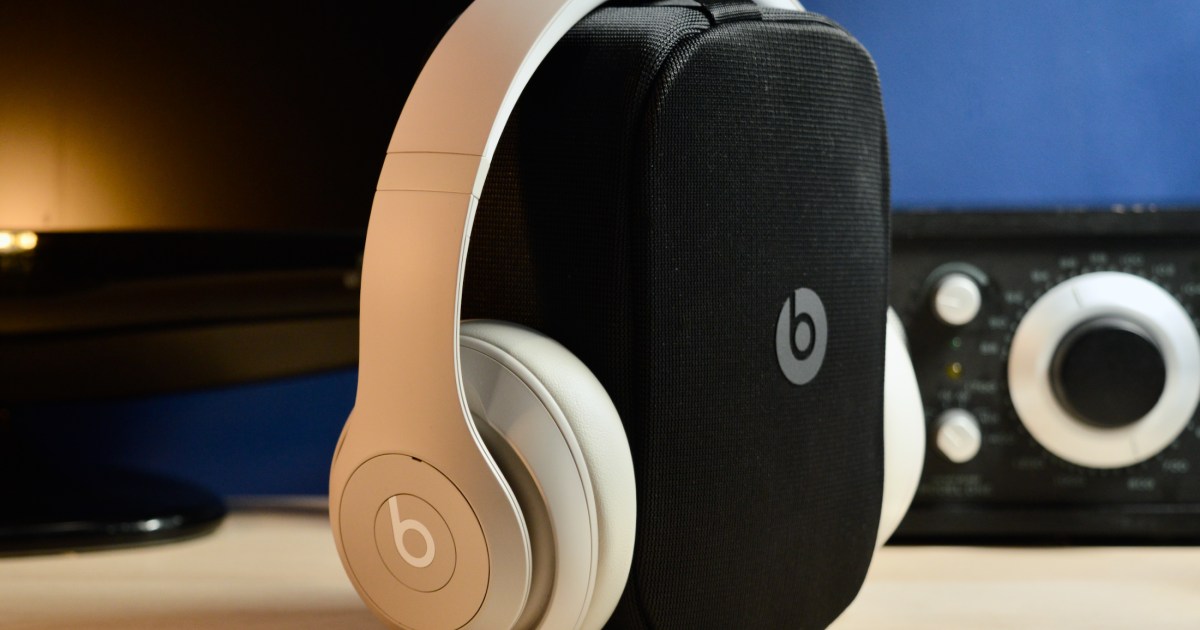
Beats Studio Pro review: new Beats for a spatial and lossless world
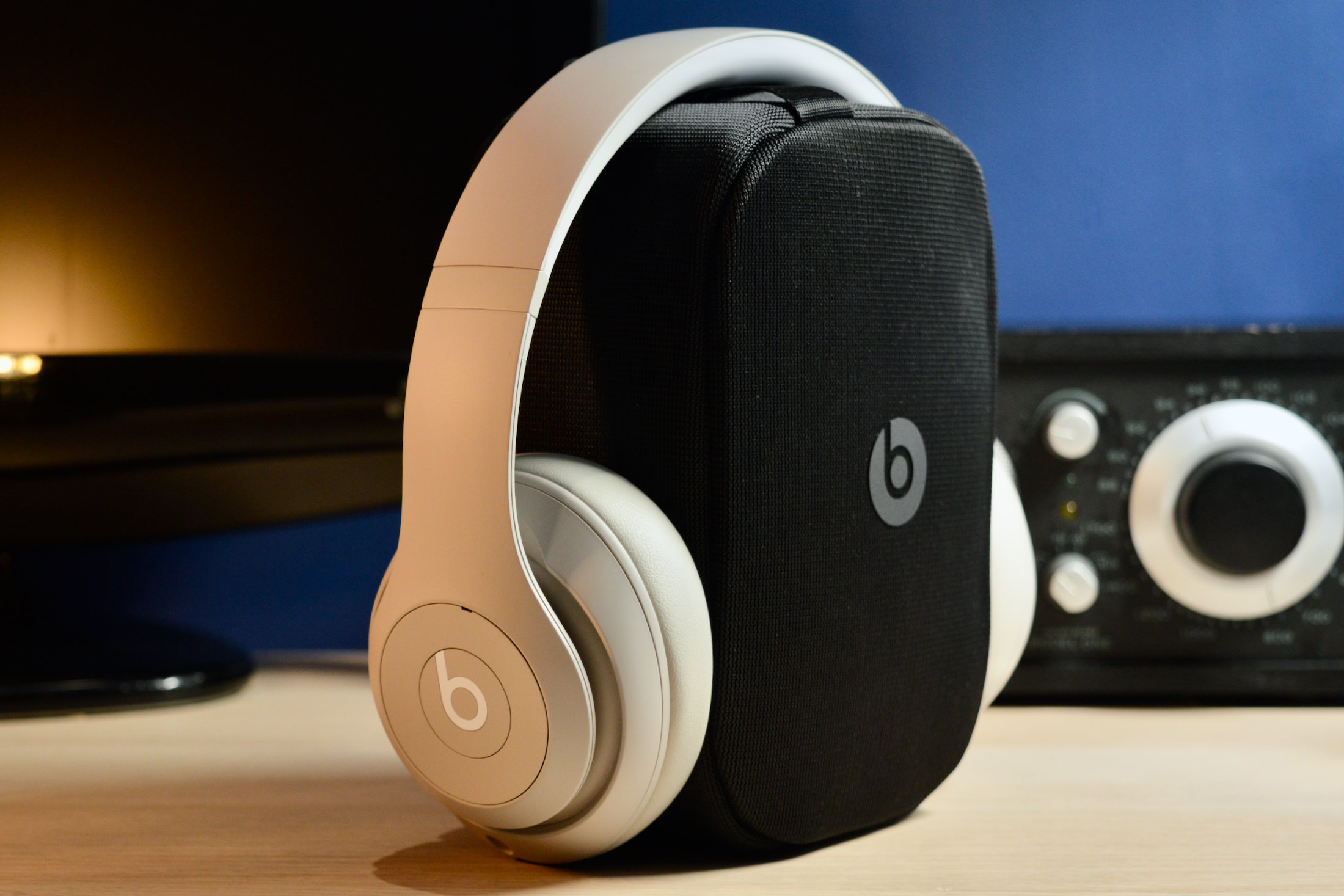
Beats Studio Pro
MSRP $350.00
“You still pay a premium for the Beats brand, but the Studio Pro are worth it.”
Pros
- Slick Beats design
- Comfy, secure fit
- Clear and balanced sound
- Head-tracked spatial audio
- Lossless USB audio
- Easy and simple controls
Cons
- No Bluetooth multipoint
- No hi-res codecs
- No wear sensors
- Head tracking doesn’t work on Android
It’s been ages since Beats released new over-ear wireless headphones, but the wait is over: the Beats Studio Pro are here, and they offer some much-needed enhancements. And not a moment too soon.
In the six years between the Beats Studio Pro and the Studio 3 Wireless (which will stick around until supplies are sold out) companies like Sony, Bose, Sennheiser — and even Beats’ owner, Apple — have debuted as many as three new versions of their flagship wireless headphones.
I was beginning to wonder (maybe you were, too?) if Beats had decided to cede the field to these giants and focus instead on its wireless earbuds.
Those fears were unfounded: The Beats Studio Pro are a set of noise-canceling wireless cans that keep the design — and the $350 price — of the Studio 3 Wireless while adding some much-needed improvements.
But given the intense competition, has Beats gone far enough? Let’s take a look.
Beats Studio Pro video review
Beats Studio Pro: What’s changed?
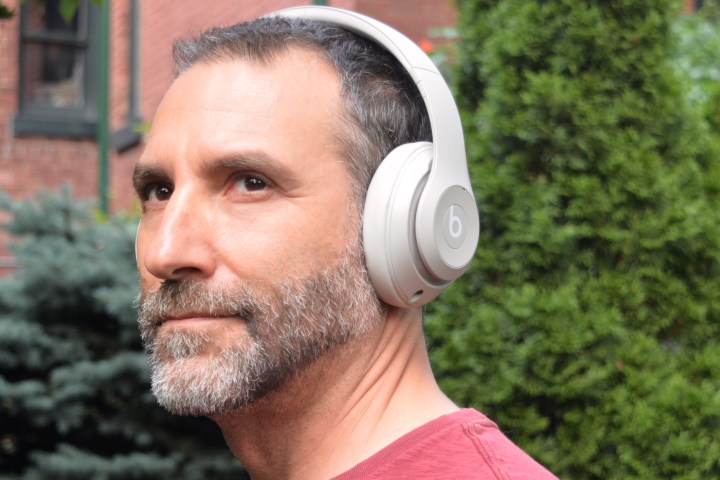 Simon Cohen / Digital Trends
Simon Cohen / Digital Trends
One glance at the Beats Studio Pro and you might easily mistake them for the Studio 3 Wireless. Their overall design is nearly identical. They sport the same sleek, integrated headband, the same prominent Beats “b” logos on the earcups, and the same folding hinges that let the headphones collapse for easier storage. The Pro even clock in at exactly the same weight: 9.17 ounces.
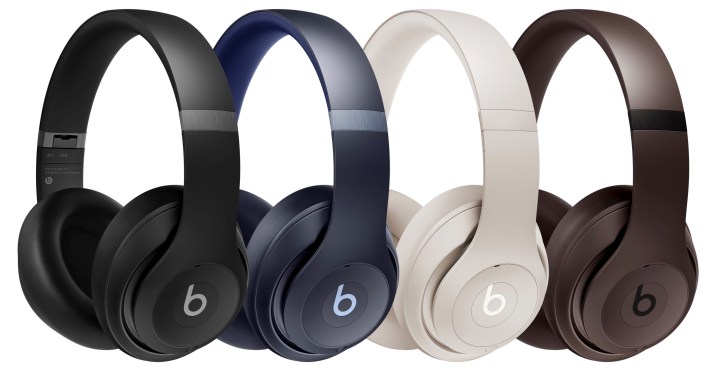 Beats
Beats
To spot the changes, you’ll need to look closer: The headband no longer bears the Beats brand, and the hinge points are now a color-matched plastic or brushed metal. Speaking of colors, there are four from which to choose: Sandstone (seen here), Deep Brown, Navy, and Matte Black — a decidedly muted set of tones when compared to glossy reds, whites, and blacks that have adorned previous Beats models.
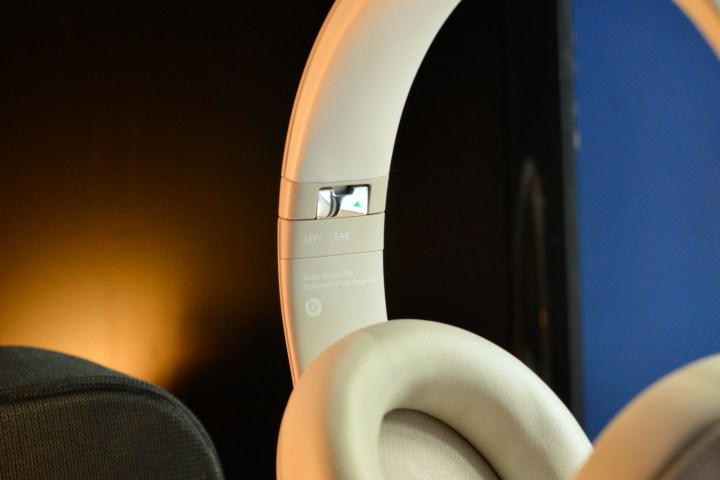 Simon Cohen / Digital Trends
Simon Cohen / Digital Trends
Beats says the earcushions use a new memory foam wrapped in synthetic leather for what it describes as “UltraPlush Comfort.”
The biggest changes are on the inside. Redesigned drivers, improved active noise cancellation (ANC), the addition of a transparency mode, support for Apple’s head-tracked spatial audio, a direct (and lossless) digital audio connection via USB-C, and three new EQ modes. The Studio Pro also adds more support for Android via Google Fast Pair and iPhone users can now speak to Siri hands-free.
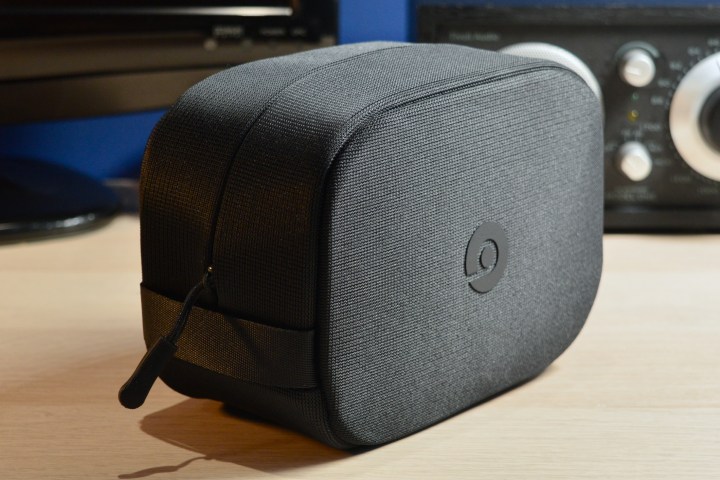 Simon Cohen / Digital Trends
Simon Cohen / Digital Trends
The Studio Pro also get a new travel case. Gone is the hard shell, replaced with a zippered soft case that kind of reminds me of a toiletry kit. It doesn’t provide as much protection for the headphones, but it’s arguably more functional, with dedicated spaces for the two included cables (3.5mm analog and USB-C to USB-C). There’s also a nearly hidden zippered interior pocket that’s roomy enough for a set of Beats Studio Buds+ or Beats Fit Pro, in case you want to travel with twice as many audio options.
If you were hoping for a full-court press on new features, the Studio Pro will leave you a little underwhelmed. There still are no wear sensors for auto-pause, no support for Bluetooth Multipoint (though I’ll discuss why that might not matter), no hi-res Bluetooth codecs like LDAC or aptX Adaptive, and despite the new EQ modes — most of the time — there’s no way to alter the sound signature.
Perhaps some things don’t need to change. Beats has retained the excellent fit of the Studio 3. The Studio Pro exert just the right amount of clamping force, providing the kind of stability that will keep these cans in place even if you opt to use them while at the gym. Not that I recommend doing so — there’s no official IPX rating for water or sweat resistance.
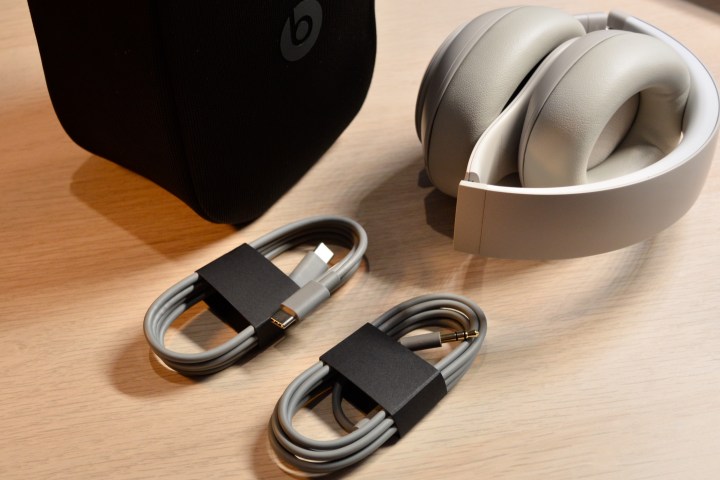 Simon Cohen / Digital Trends
Simon Cohen / Digital Trends
The underside of the headband retains the soft but grippy silicone, and the earcups can freely pivot to conform to your head. Those new earcushions are indeed a step up in terms of padding, but folks with big ears may find them less roomy than the Sony WH-1000XM4. After a few hours, they created pressure against my earlobes.
I’m also happy that the Studio Pro use the same physical controls as the Studio 3. The big “b” logo on the left earcup gives you play/pause, call answer/end, and track skip forward/back, while the space immediately above and below that logo can be pressed for volume control. I still find these buttons a bit loud when clicked, but it beats (sorry) messing around with tiny buttons or inaccurate touch controls.
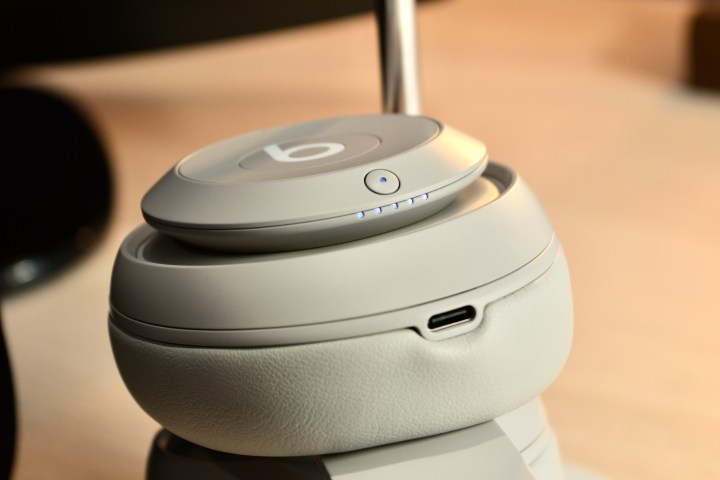 Simon Cohen / Digital Trends
Simon Cohen / Digital Trends
My only gripe is that the tiny power button on the bottom of the right earcup is still used for switching ANC mode. Now, instead of ANC on/off, you can choose to include transparency mode in the mix, but each mode change requires a double-click, and it’s not as easy to use as the other buttons.
Speaking of ANC mode, the Studio Pro are considerably better than their predecessors at killing unwanted noise. Though still not as capable as the Bose Noise Cancelling Headphones 700 or the Sony WH-1000XM4, the Pro provide a much quieter listening experience when surrounded by the buzz of a coffee shop or the droning noise of engines. Sitting about 6 feet from my noisy bathroom fan, the Studio Pro all but eliminated that sound, letting me work in comfort.
These are my favorite Beats headphones so far.
Better yet, the Pro don’t exhibit the Studio 3’s background hiss when not playing music, something I found very distracting on the older model.
A word of warning for those who live in breezy locations — as good as the Pro’s ANC is, it doesn’t deal well with wind. Even a light breeze can interfere with the feed-forward mics. Your best bet at this point is to turn off ANC.
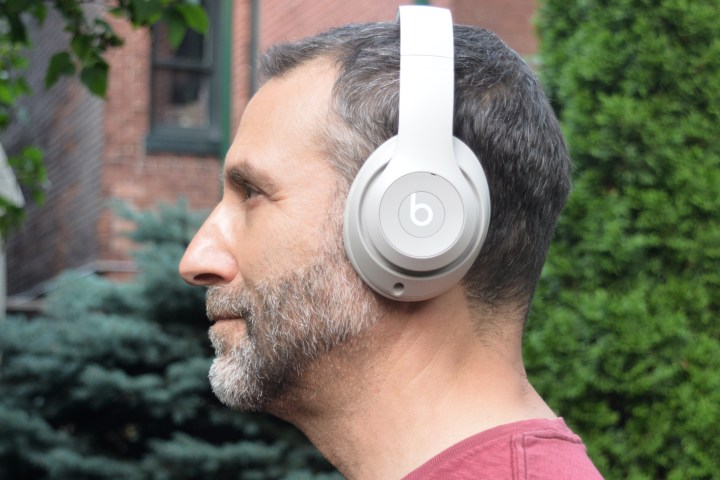 Simon Cohen / Digital Trends
Simon Cohen / Digital Trends
The newly added transparency mode is very helpful. Even with ANC turned off, the Pro’s earcushions offer very good passive noise isolation — so trying to have a conversation without any extra help can be challenging. Transparency mode solves this problem. It’s not quite the magical “I feel like I’m not wearing headphones” effect that you get with the AirPods Max or AirPods Pro 2, and it’s not intelligent enough to switch to ANC when very loud sounds occur, but for occasional use, it’s more than adequate.
Related: Beats Studio Pro vs. Apple AirPods Max: which cans are best for Apple fans?
Clarity throughout the frequency range is excellent.
Beats says the Studio Pro are equipped with a set of custom-designed 40mm drivers that reduce distortion, and I have to say, these are my favorite Beats headphones so far in terms of audio quality. Beats has been on something of an evolutionary journey. The brand made a name for itself in the early days with a sound signature that offered boosted bass frequencies. That was welcomed by fans of hip-hop, rap, and EDM, but it didn’t always offer the best sound for other genres.
With the launch of the Studio 3, it felt like the company overcorrected in the other direction, leaving those cans sounding weak in the low end when compared to Sony’s offerings. The Studio Pro have finally found the Goldilocks zone, with a really pleasing balance of frequencies. If you’ve ever dismissed Beats in the past for sounding too processed, the Pro might just change your mind.
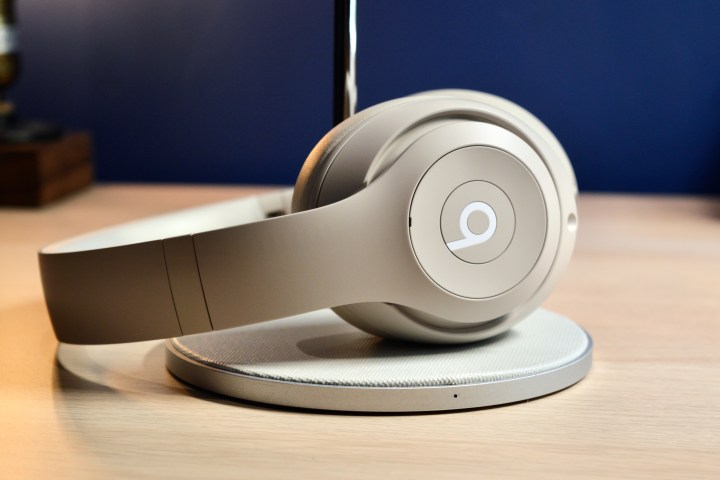 Simon Cohen / Digital Trends
Simon Cohen / Digital Trends
Clarity throughout the frequency range is excellent. Transients, like cymbal hits, are tightly controlled and while the bass response might not be as deeply resonant as the XM4, I never found it lacking. Fans of Bose headphones like the QC45 will feel right at home with the Studio Pro — both headphones exhibit punchy energy in the upper mids and higher frequencies — giving vocals a little extra kick.
These observations are based on using the Studio Pro wirelessly, but you can also use them as wired cans from analog sources and — for the first time on a set of Beats headphones — from digital sources, too, thanks to the USB-C connection. Both require the Studio Pro to be powered on, so they aren’t going to help if you run out of juice. (Though if you’re using the USB-C cable, you’ll be charging while listening.)
USB audio connection offers a noticeable improvement in detail and dynamic range.
You may wonder why you’d ever want to go back to a wired connection. If you’re looking for the very best audio quality, a direct digital connection is absolutely worth it, especially if you’ve got access to lossless music.
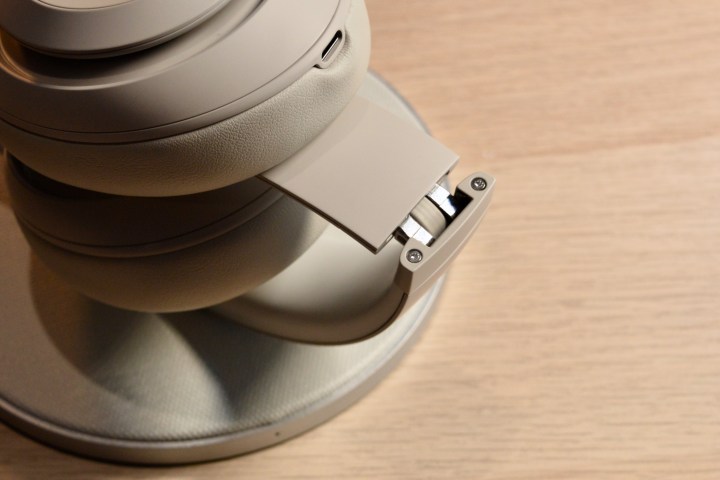 Simon Cohen / Digital Trends
Simon Cohen / Digital Trends
It comes down to all of the ones and zeros that make up digital audio. When you listen to digital audio using Bluetooth, some of those ones and zeroes are changed and some are discarded altogether. Because the Studio Pro only work with SBC and AAC Bluetooth codecs — both of which are “lossy” — not only is some audio information destroyed, but there’s also no way to hear the added detail of 24-bit hi-res audio tracks.
Beats Studio Pro: The USB-C difference
The USB audio connection solves both of these limitations. It’s lossless, so nothing gets altered or tossed out, and the Pro’s onboard digital-to-analog converter (DAC) can handle up to 24-bit/48kHz resolution, so you can hear lossless hi-res audio in all its glory. Even Apple’s outrageously expensive AirPods Max aren’t able to do that.
I found that the USB audio connection offered a noticeable improvement in detail and dynamic range when listening to lossless audio from sources like Apple Music, Amazon Music, and Tidal. But as great as this feature is, Beats didn’t quite stick the landing.
The included USB-C cable is too short and too stiff to make for a truly comfortable listening experience. USB audio only works with an iPhone if you have a compatible USB-C-to-lightning adapter, but for some reason, Beats didn’t include one in the box. (Possibly because the iPhone 15 is expected to sport USB-C?)
The onboard DAC is hi-res-capable, but only barely — there’s plenty of lossless hi-res music on Apple Music at sampling rates as high as 192kHz, but the Studio Pro are limited to 48kHz. (You can still listen to these tracks, but they’ll be down-sampled.) Finally — and this may be the weirdest part of all — when you’re using the USB audio connection, ANC and transparency modes are unavailable. Instead, the power/ANC button becomes your way to access three USB audio-only EQ modes known as Signature Profile (music listening), Entertainment Profile (movies, TV shows), and Conversation Profile (phone calls, podcasts).
Why are these profiles only available in USB audio mode? I wish I could tell you, and for what it’s worth they only seem to offer mild variations in EQ, and I found that I ended up sticking with the Signature profile regardless of the content I listened to. A manual five-band equalizer option would have been a welcome addition, but Beats and Apple have never offered this.
One more note on wired audio: the Studio Pro have a dedicated analog input, which is handy for airplanes and other non-digital sources, but there’s a catch. Technically speaking, it doesn’t passthrough unmodified analog signals — the audio is first converted to digital, then processed by the onboard DAC, where it’s re-rendered as analog. This isn’t new — the Studio 3 did the same thing and so do the AirPods Max.
Frankly, it sounds fine to me, but if you’re an audiophile who was hoping to use your own DAC/amp with the Studio Pro, be warned — your DAC won’t be the last link in the audio chain.
Beats Studio Pro: spatial audio
In keeping with Apple’s current devotion to spatial audio, the Studio Pro are equipped with sensors that enable head-tracked spatial audio for both movies and music. Head tracking takes 3D audio formats like Dolby Atmos and attempts to make them feel even more lifelike by anchoring certain parts of a soundtrack (like voices) to the space immediately in front of you. Turning your head feels like you’re actually turning away from those voices, which remain locked in space.
I’m not sold on this experience for music listening — especially when commuting, walking, or working out — it’s too distracting. However, it’s a blast for watching movies, when the effect can make a set of headphones sound eerily close to a full home theater system. This works on Apple’s iPhones, iPads, and the Apple TV 4K, and it’s coming to the company’s laptops. Unfortunately for Android users, head-tracked spatial audio isn’t supported.
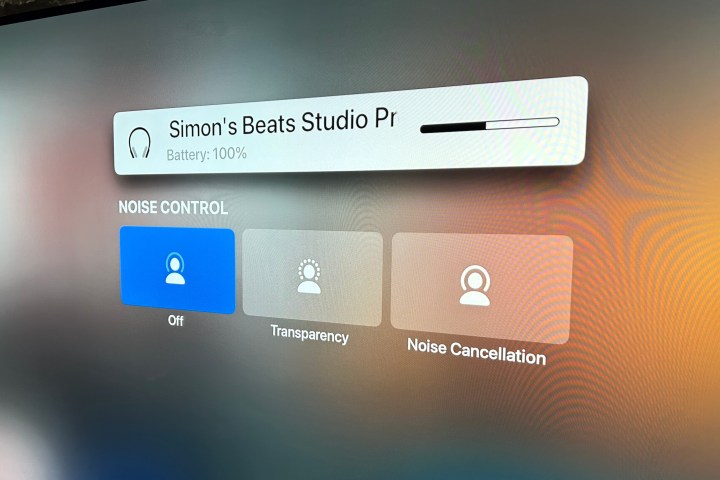
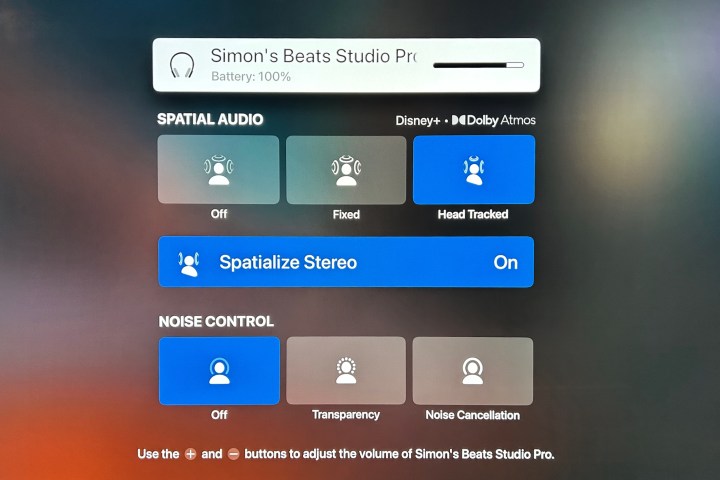
The Bluetooth connection on the Studio Pro is rock-solid and offers impressive range thanks to its Class 1 transmitter, which can triple the Bluetooth distance of lesser wireless headphones. It’s also a breeze to set up on both Apple and Android phones now that Beats has added support for Google Fast Pair.
The Apple and Google ecosystem compatibility is a good thing as long as your digital life fits neatly into one or the other. If it does, switching the Studio Pro between devices is a snap. However, if your phone is an iPhone but your laptop is a PC or some other cross-platform combo, the lack of true Bluetooth multipoint could be a nuisance — especially since literally every other set of wireless headphones at this price or higher (save once again for the AirPods Max) has this feature.
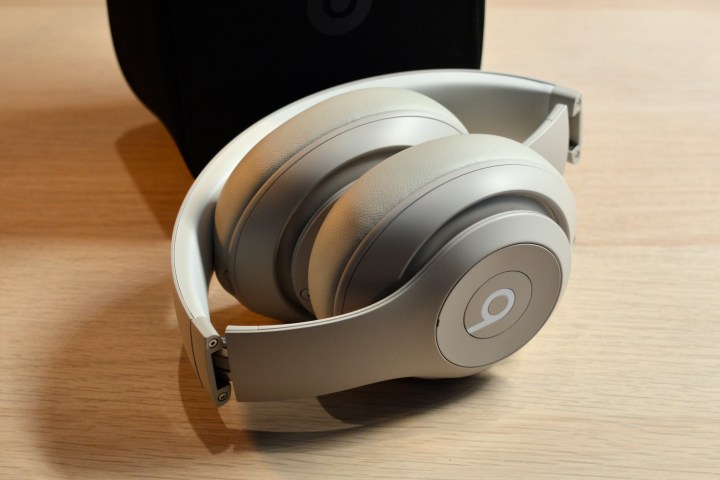 Simon Cohen / Digital Trends
Simon Cohen / Digital Trends
Call quality also has been substantially improved. Outdoors, loud sounds are very effectively canceled, so your callers won’t have to listen to passing trucks as you talk. At these times, the noise-canceling circuit can be a bit aggressive and your voice may wobble or sound compressed. When things are quiet, your callers probably won’t know you’re outside at all.
On your end of the call, you can switch to transparency mode at any time, which lets you hear your own voice much more clearly. It’s not perfect — some low frequencies still get a bit trapped, causing a vaguely muffled sound — but it’s way less tiring than no transparency at all.
Indoors, as always, it sounds better still, but here’s a pro tip: If giving your callers the best version of your voice matters, use the included USB cable with your laptop or phone — the improvement in voice quality is remarkable. Unfortunately, your experience won’t be quite as good because — as I mentioned above — you can’t use ANC or transparency with USB audio.
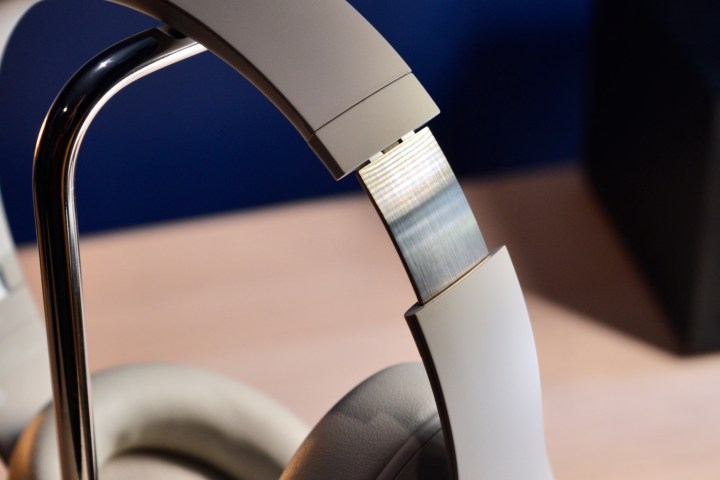 Simon Cohen / Digital Trends
Simon Cohen / Digital Trends
Battery life is one area where Beats has chosen to make no real improvements. With a claimed 24 hours of listening time with ANC on and about 40 hours when it’s off, the Studio Pro have the same stamina as the Studio 3. While it’s always great to see headphone makers extend the amount of time you can squeeze from a set of wireless cans before needing to plug in, these numbers are probably enough for all but the most frenetic (or forgetful) travelers. Plus, there’s still a quick-charge feature to get you through a moment of panic: a 10-minute quick-charge could buy you up to an extra four hours of use.
One word of caution when it comes to durability. Some Studio 3 owners have had poor experiences when it comes to the robustness of the hinges and headband. That sleek one-piece look comes at the expense of toughness. Reddit has many reports of cracked and broken units and even the original Studio 3 that Beats sent us for our review ended up suffering a similar fate — and was replaced, twice. From what I can see, the Studio Pro have identical materials and build quality.
Beats Studio Pro: The bottom line
At $350, the Beats Studio Pro go head-to-head with some of the best noise-canceling wireless headphones, like the Sony WH-1000XM4 ($350), Bose QC45 ($329), and Sennheiser Momentum 4 Wireless ($350). Style is of course, subjective, but the Studio Pro — with their sleek design and wide range of color choices — are going to appeal to a lot of folks.
And for the first time, it no longer feels like you’re giving up as much to be in the Beats camp. Sound quality, ANC, transparency, and call quality are all improved. And while the Studio Pro can’t claim to be better than the competition on any one of these elements, the gap is now small enough that I don’t think it’s an issue. Plus, with head-tracked spatial audio and USB audio, the Studio Pro actually eclipse similarly priced alternatives.
The lack of Bluetooth Multipoint, advanced audio codecs, adjustable EQ, and wear sensors is a bit tough to swallow considering what you’re spending, but neither are they deal-breakers. If you’re already a Beats fan, the Studio Pro are the wireless cans you’ve been waiting for. And if you’ve never tried the company’s products, this might be the right time to change that.


